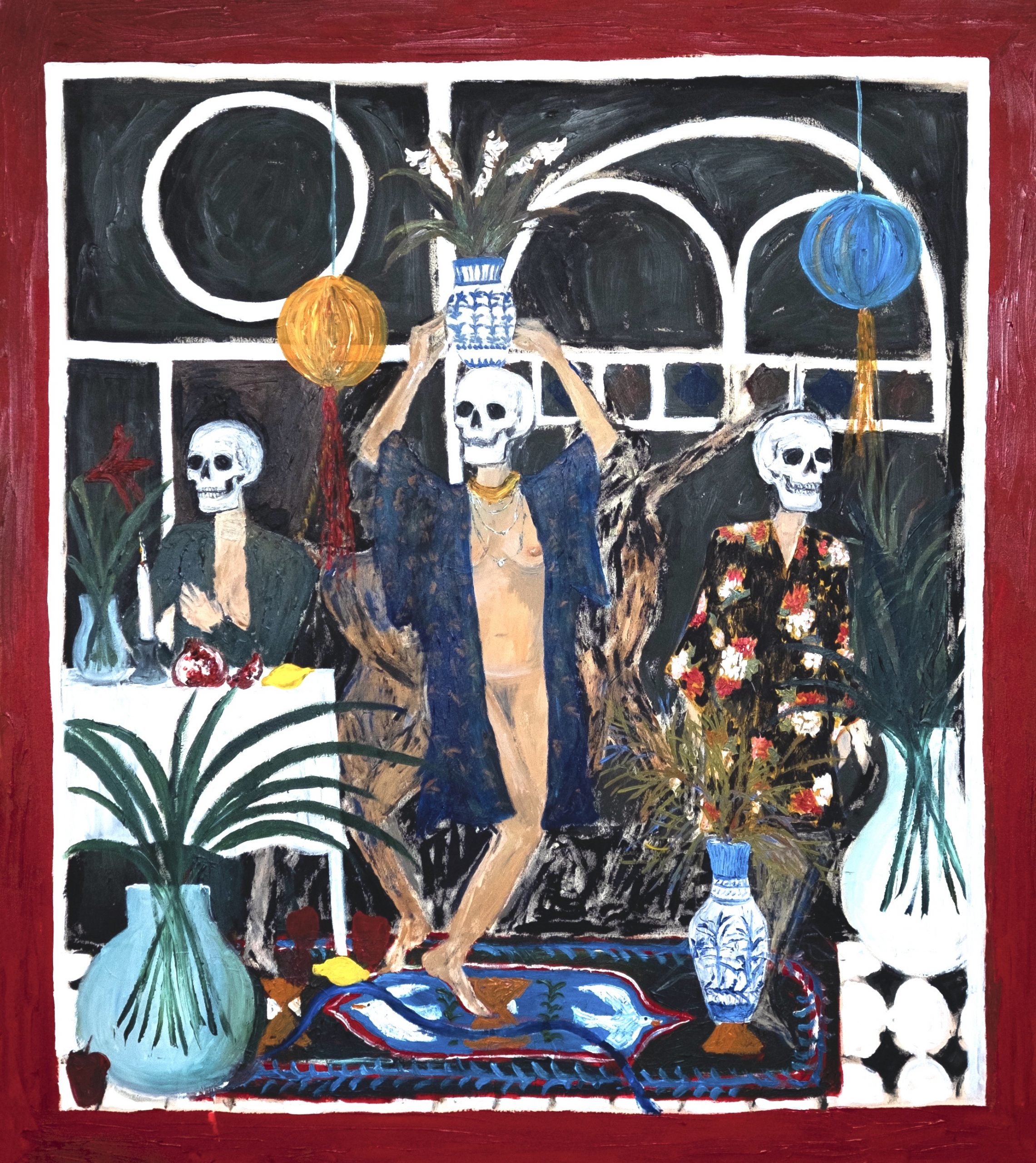Elämän kevät
Entering Melina Paakkonen’s exhibition is like opening a medieval hand-illustrated book. In 1200s Paris, secular motifs joined religious illustrations in manuscripts. They typically featured decorative but largely two-dimensional imagery, ornamental framing of the pages and chivalric motifs.
The manuscript paintings were small in size, but their aesthetics shares a lot of similarities with Paakkonen’s paintings. The composition, use of colours and the cartoonish nature of the characters reflect similar narrative tendencies. The precise and intricate painting is unashamedly ornamental, and at times the paintings also include collage elements. The viewer longs to touch the artwork’s surface, to feel in their fingers the decorative and repetitive pattern left in the paint by the brush.
Paakkonen paints stories, one could even say fables adapted to the modern era, where the boundary between human and animal vanishes, and humour is wrapped in small details. Paakkonen describes the world in anthropomorphic means. She attaches human characteristics to figures such as skeletons, monkeys and cats. In some pieces, a self portrait brings interesting contrast to the artwork. It is almost an expressionless female figure, quite serious compared to the other characters. Although the story is left to the viewer’s own interpretation, Paakkonen has painted its parameters more clearly than usual. The name of the exhibition, Elämän kevät (literal translation Springtime of Life) is in Finnish an idiom referring to our daily bread, and its metaphors may be interpreted in this context. Elämän kevät intermingles with the dance of death, with the Gothic meeting Santa Muerte and the endearing skeletons of Hugo Simberg.
Paintings also feature within the paintings. These nested stories are declarative and pictures within pictures humorous commentary on the conventions of painting. They are paintings that have turned into pictures. The world painted in the background of the figures and stories is something quite different from a Finnish Artek home. It is almost an Oriental mix of the splendour and warmth of the days of yore. The houseplants, toys and pets easily belong to the same imagery with Oriental carpets and mosaic floors. Their reality is a little bit of circus, a little bit of musical and a lot of story that finds no real-life counterpart.
Elämän kevät is Paakkonen’s second solo exhibition in Helsinki; the first was seen in ARTag Gallery in 2019. Her artworks are included in collections such as the contemporary art collection donated by Lars Göran Johnsson to the Turku Art Museum. Her artworks were prominently featured in the exhibition showcasing the donation last spring.

